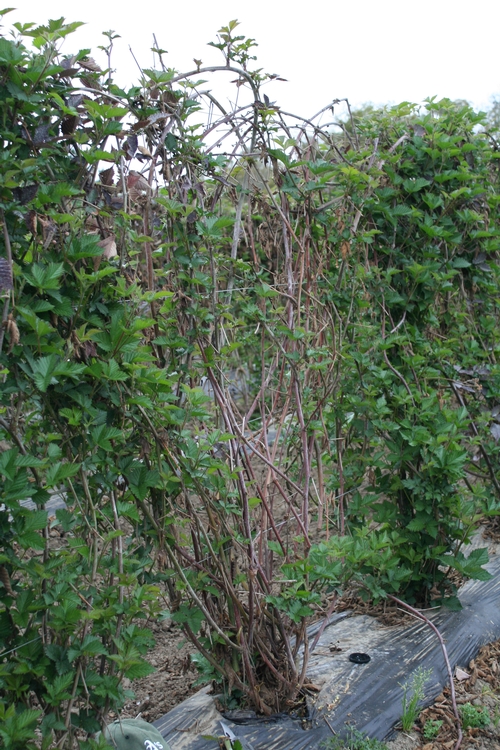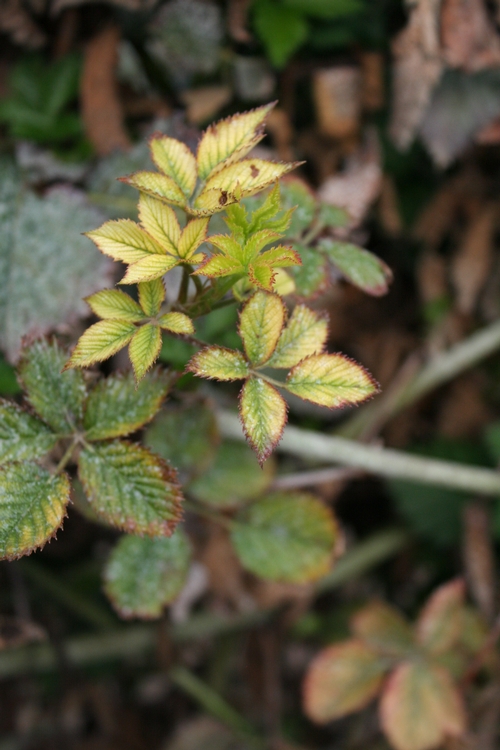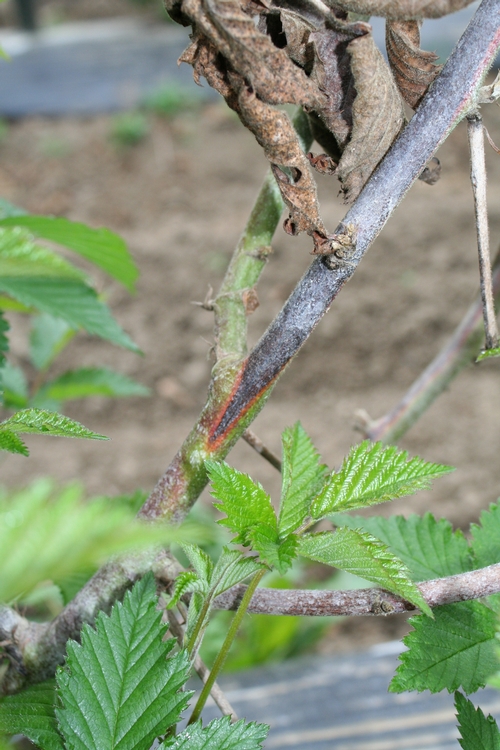A recent case of wilting blackberries around Watsonville has been confirmed from multiple samples submitted to several plant pathologists (the UCCE plant pathology diagnostic lab in Salinas obviously being one of them) to be caused by Verticillium dahliae. The pattern is one of wilted plants scattered over the breadth of the field, with very few groups of more than three dead or dying plants. Verticillium on blackberry is actually pretty rare to find; in my career of more than 10 years I have only found 4 other blackberry samples to be positive for this disease.
As one can see from the pictures below, the affected plants stand out from the rest of the field by having few to no leaves (Photo 1). Additionally, there are some leaves on affected plants which are a stark yellow color (Photo 2) and according to the literature this yellow leaf color can be diagnostic for Verticillium wilt. Note also the darkened color of the epidermis (Photo 3) and the obvious discoloration of the vascular tissue (Photo 4) found when cutting deeper into the cane.
Generally, it is not at all uncommon in this field to will find Verticillium infected branches and others which are apparently healthy on the same plant. This is consistent with an infestation of Verticillium which has not invaded all the roots and consequently has left some vascular tissue healthy and functioning.
The solution to this problem is to continue cropping if the disease does not manifest itself in many other plants with an eye to maintaining good watering practices so as to make up for the Verticillium compromised vascular system. However, when planting a new blackberry crop, it would is strongly suggested to fumigate or use a variety which is less susceptible to Verticillium disease.
Researchers have found that V. dahliae exists as a series of different strains that have different host preferences. Characteristics of the blackberry V. dahliae pathogen have not been studied. Until further research information is available, growers should therefore assume that V. dahliae from blackberry, raspberry, and strawberry all can cross infect these three crops. This assumption would be important to remember when considering crop rotations.
Attached Images:



